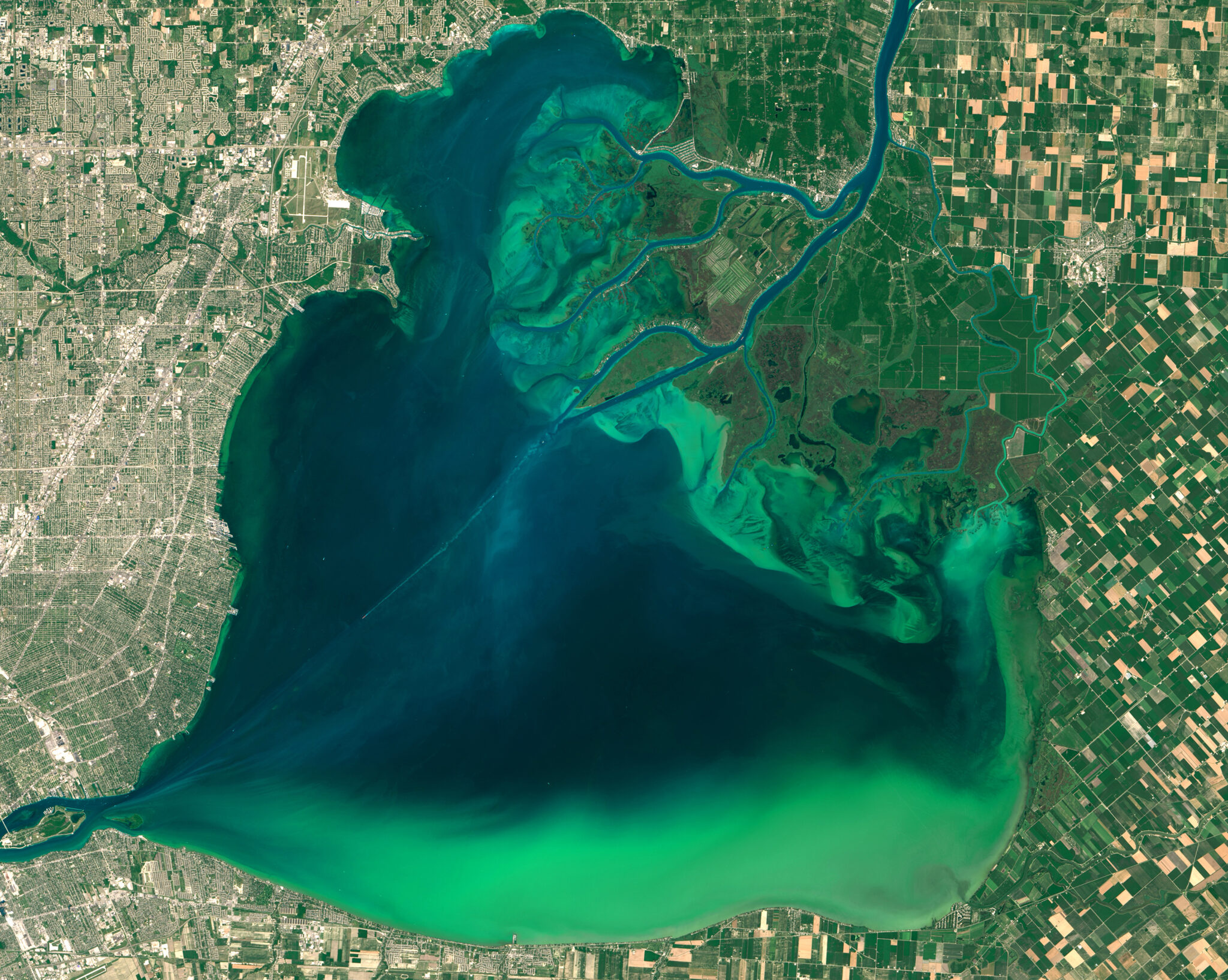

Algal blooms in Lake St. Clair and in western Lake Erie in 2015. NASA Earth Observatory
Heavier rainfall linked to rising temperatures could substantially increase the volume of agricultural runoff flowing into waterways, triggering toxic algal blooms, according to new research.
A study published Thursday in the journal Science finds that heavier rainfall could increase nitrogen runoff in U.S. lakes, rivers and streams by 19 percent by the end of this century.
Last year, heavy rain caused an algal bloom in southern Florida that led the governor to declare a state of emergency, while a 2014 algal bloom contaminated the water supply in Toledo, Ohio.
“When we think about climate change, we are used to thinking about water quantity—drought, flooding, extreme rainfall and things along those lines,” Anna Michalak, professor of global ecology at the Carnegie Institution for Science in Stanford, California, and an author of the study, told the New York Times.
“Climate change is just as tightly linked to issues related to water quality, and it’s not enough for the water to just be there, it has to be sustainable.”
For a deeper dive:
New York Times, Washington Post, AP, Climate Central, InsideClimate News, Wired, The Verge
For more climate change and clean energy news, you can follow Climate Nexus on Twitter and Facebook, and sign up for daily Hot News.

 233k
233k  41k
41k  Subscribe
Subscribe 